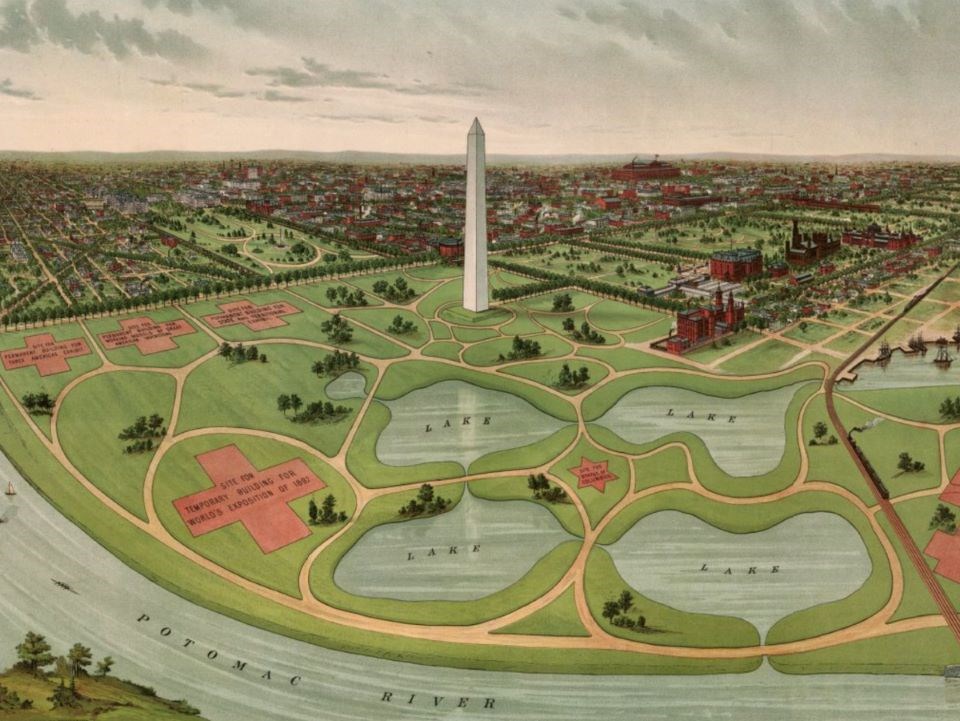Last updated: October 5, 2021
Article
There Was Something Fishy Going on There...

But it wasn't always like this. There were other additions on the grounds in earlier years.
One was Babcock Lake, on the north side of the parkland, in the mid-19th century. Babcock Lake was a remnant from an old canal basin. The canal used to run down what is now Constitution Avenue.
The canal was filled in during the 1870s, but Babcock Lake survived. People skated on it during the winter and fished in it during the warmer months. Vendors sold lemonade and gingerbread.
The U.S. government was busy there, too. In the center of the lake was Ripps Island. The government constructed a small bridge to the island. In 1878, on the island itself, it built a series of aquariums, reservoirs, and eight ponds.
They were used for breeding carp, thousands of them each year, except one pond reserved for turtles. There were three carp species in all, separated from each other.
When mature, some of the adult fish would be released into Babcock Lake. Others were sent to places in and around Washington, including the Tidal Basin. Some carp grew up to eight or nine inches long.
Aquatic plants were soon installed to decorate the ponds. The aquarium allowed visitors to observe the fish.
But Lt. Col. Thomas L. Casey, the engineer who had overseen the completion of the Washington Monument, decided to fill in Babcock Lake. He was worried that its proximity to the monument (only 114 yards away) might undermine its foundation and that the lake might interfere with grading an artificial hill around the monument.
By December 1888, Babcock Lake was no more. The lake was filled in as landscaping was completed for the monument and the Ripps Island facilities were donated to the U.S. Department of Commerce and eventually became the National Aquarium, a popular tourist attraction. The aquarium closed in 2013 and the specimens were transferred to the National Aquarium in Baltimore.
